A little trick taught to me by a bloke who has been keeping bees for 84 years. (Started when he was 6 and is now 90) When he finds sealed queen cells in a hive, he carefully brushes the bees of that frame plus about four more frames of sealed brood and places them into an empty box. He then adds a couple of frames of honey and fills the gap with empty frames. No bees are added. He then puts on a bottom board and lid. The main hive is moved to another location about 10m away and the empty box containing the queen cells is placed on the original hive site. Flying bees return to the original sit and many of the bees from the main hive leave and also return to the empty box. As there is no open brood in the new box, pollen frames and nurse bees are not required. The queen cell hatches in four or five days and mates. Young worker bees also begin hatching making space available for the new queen to begin laying. In the old hive, the queen has a large proportion of nurse bees with flying bee numbers reduced. Quite often the swarm impulse disappears due to the drop in bee numbers. Remaining queen cells are often torn down. If swarming does still occur, it is a much smaller swarm. Ive used this trick in the past and it is simple, quick and effective. It is better suited to hives that run a double brood box or in hives where queen excluders are not used.
You are using an out of date browser. It may not display this or other websites correctly.
You should upgrade or use an alternative browser.
You should upgrade or use an alternative browser.
Beekeeping
- Thread starter Lesgold
- Start date

Help Support Prospecting Australia:
This site may earn a commission from merchant affiliate
links, including eBay, Amazon, and others.
bee's are coolSkip said:Few years ago I was quite heavily into photography, and with new lenses came new objects to shoot.
Think most of my bee photos are on my old computer. Tho I do have a few on slides too
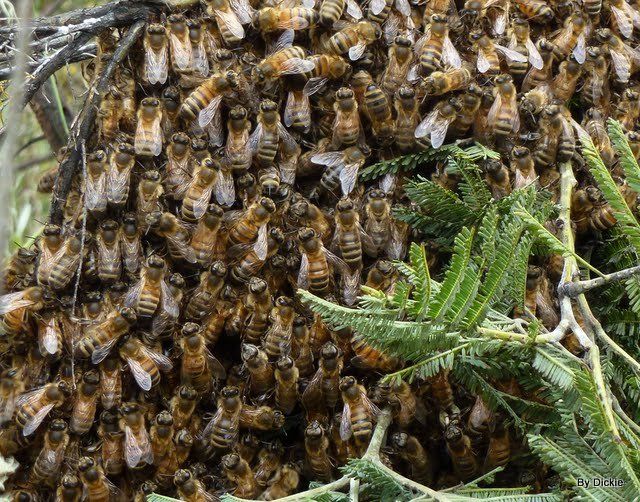
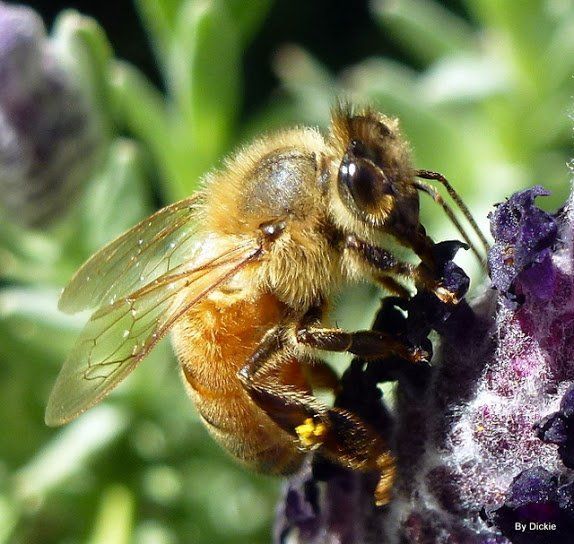
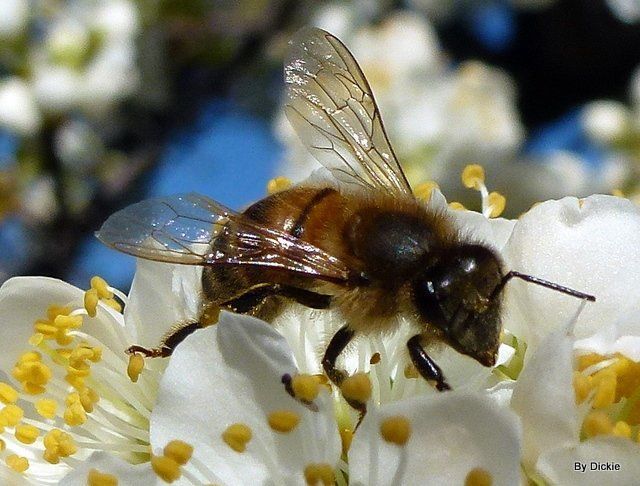
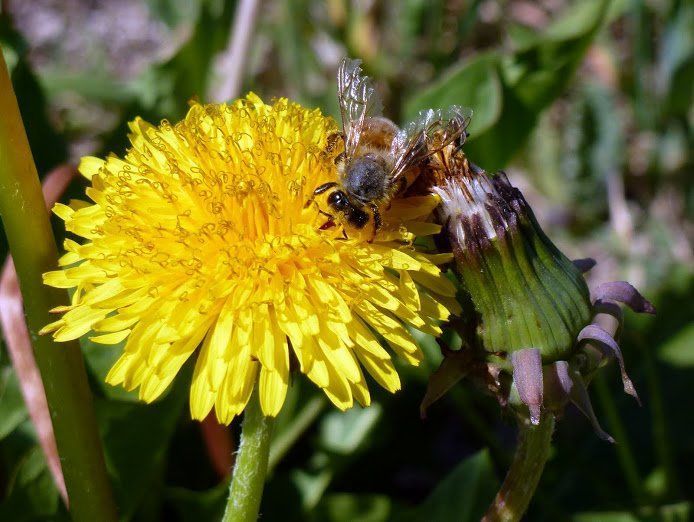
fascinating :Y:Lesgold said:A little trick taught to me by a bloke who has been keeping bees for 84 years. (Started when he was 6 and is now 90) When he finds sealed queen cells in a hive, he carefully brushes the bees of that frame plus about four more frames of sealed brood and places them into an empty box. He then adds a couple of frames of honey and fills the gap with empty frames. No bees are added. He then puts on a bottom board and lid. The main hive is moved to another location about 10m away and the empty box containing the queen cells is placed on the original hive site. Flying bees return to the original sit and many of the bees from the main hive leave and also return to the empty box. As there is no open brood in the new box, pollen frames and nurse bees are not required. The queen cell hatches in four or five days and mates. Young worker bees also begin hatching making space available for the new queen to begin laying. In the old hive, the queen has a large proportion of nurse bees with flying bee numbers reduced. Quite often the swarm impulse disappears due to the drop in bee numbers. Remaining queen cells are often torn down. If swarming does still occur, it is a much smaller swarm. Ive used this trick in the past and it is simple, quick and effective. It is better suited to hives that run a double brood box or in hives where queen excluders are not used.
Nice pics. Really good detail. Well done.
- Joined
- Oct 2, 2018
- Messages
- 350
- Reaction score
- 604
Yeah nice CTX what were you using? I've still got a bit of Canon gear. 70-200L 2.8 IS and a 24-70 2.8 and a few others. I sold my 5d thinking about getting a 6D. That and a new coil and new outboard engine and trip to Europe and Bali + a new car and cruise ..lol
No wonder I'm broke O
No wonder I'm broke O
HAVE YOU EVER HEARD OF THE HALLUCINOGENIC HONEY OF GIANT HIMALAYAN BEES?
https://www.wideopenspaces.com/have...hallucinogenic-honey-of-giant-himalayan-bees/
[video=480,360]https://youtu.be/Y_b2i_FvYPw[/video]
Pretty interesting. Drug dealing bees hahaha. If you watch the vid you'll see Mr Deepak pass out.
https://www.wideopenspaces.com/have...hallucinogenic-honey-of-giant-himalayan-bees/
[video=480,360]https://youtu.be/Y_b2i_FvYPw[/video]
Pretty interesting. Drug dealing bees hahaha. If you watch the vid you'll see Mr Deepak pass out.
An interesting flick. Thanks for that Hardluck. Ive had similar symptoms with bunny and coke. Lol
Went today and harvested 7 frames. 3 from one hive and two each from another 2 hives. I left the psychotic hive alone for another day.
All my hives are pretty close together but it's amazing how different the honey is.
The one I got 3 frames from was very light couloured and very sweet with a slightly bitter aftertaste, whilst the dark one is an in your face knockout taste.
Anyway's I'll process in the next couple of days. I have buyers waiting.
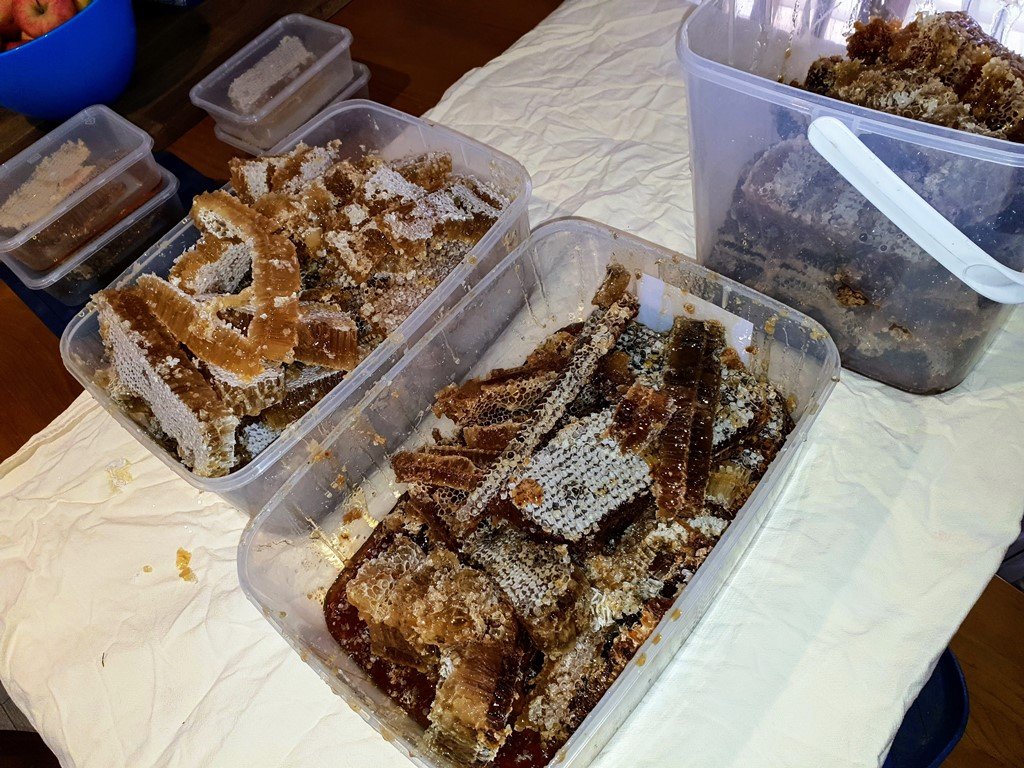
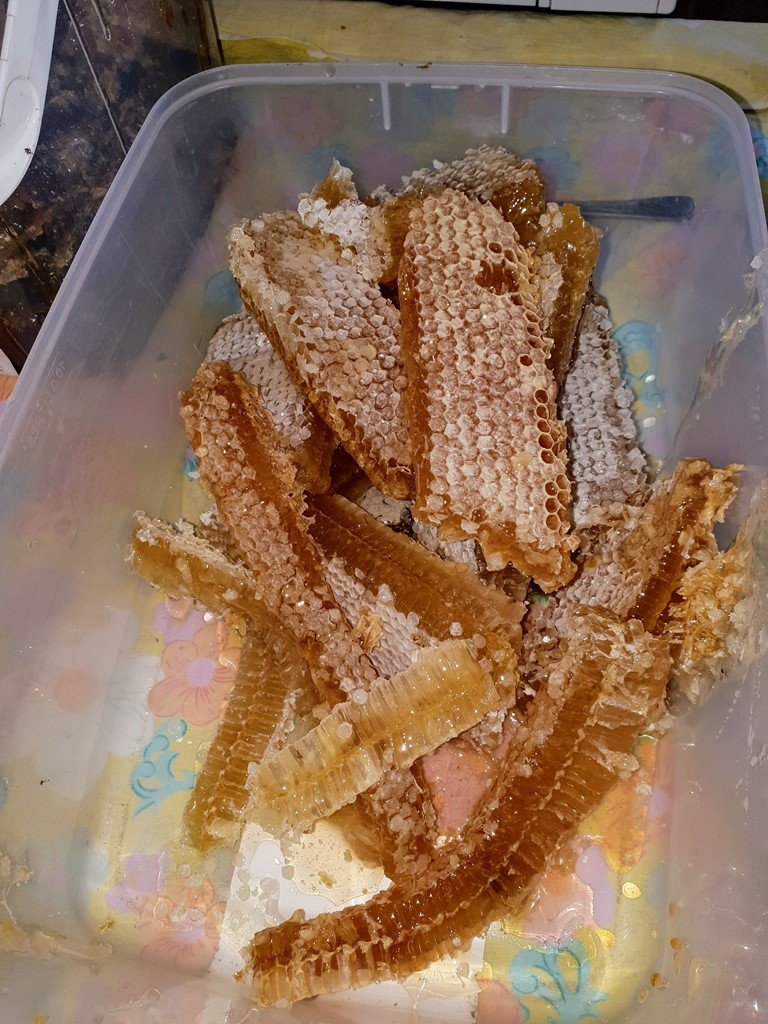
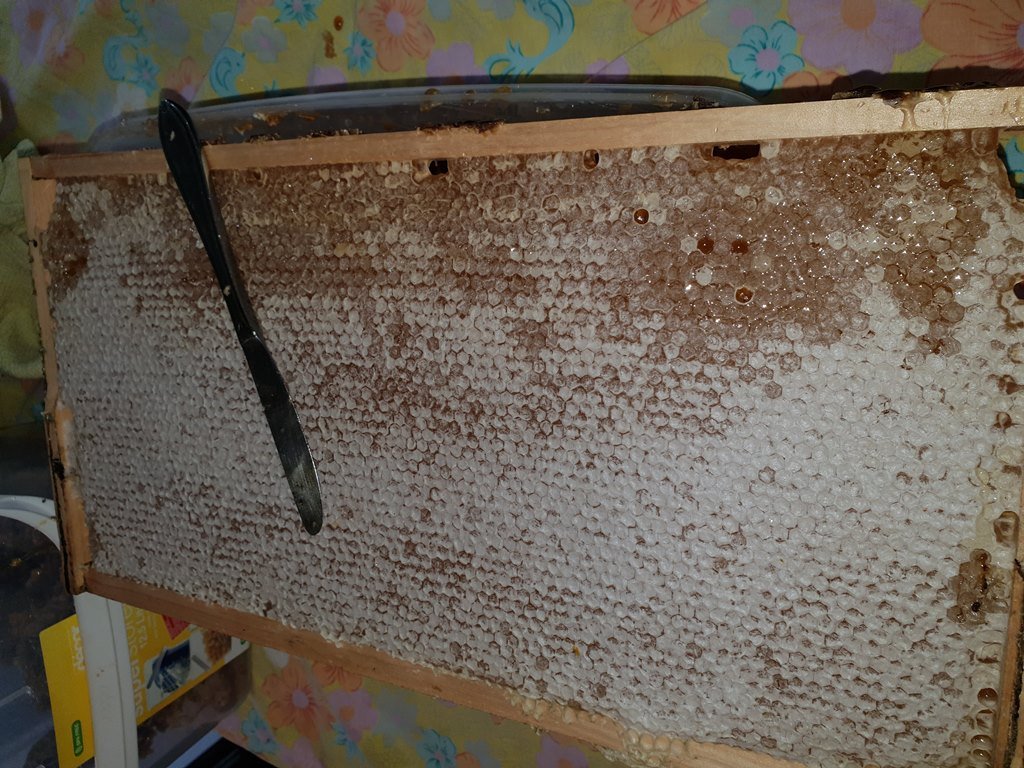
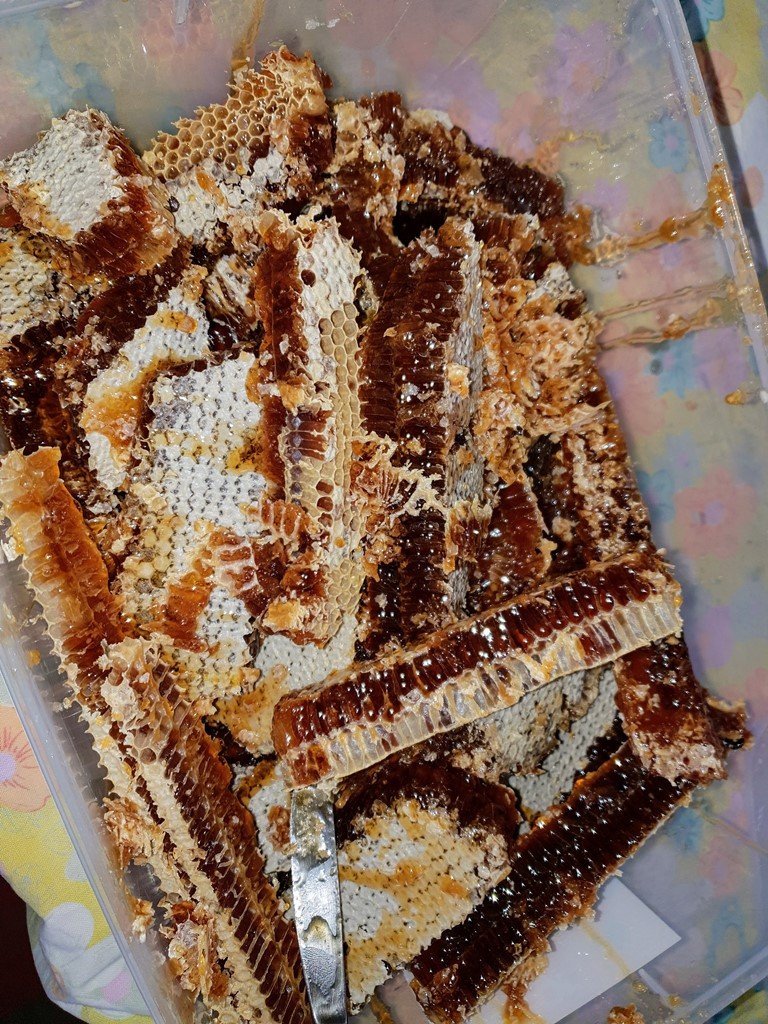
All my hives are pretty close together but it's amazing how different the honey is.
The one I got 3 frames from was very light couloured and very sweet with a slightly bitter aftertaste, whilst the dark one is an in your face knockout taste.
Anyway's I'll process in the next couple of days. I have buyers waiting.




Ok silly question, how do you seperate the wax from the honey or the other way round?
Mackka
Mackka
Well done Hardluck. Like the look of the darker honey. Should have an intense flavour. Its quite interesting watching the bees from different hives. One hive could have most of the bees travelling to the north and the hive next door could have the bees heading south. Once they lock onto a nectar source, they keep going back.
Hi Mackka, should let Hardluck explain his technique but when I was harvesting small quantities in this manner, I would crush everything with a potato masher and then put it into a sieve to drain. Works well. The sticky wax thats left over can be soaked in water for a while and then melted down.
I did a token extraction (About 40kg of honey) a couple of days ago to make a bit of room in some hives that were becoming honey bound. I needed to give the bees a bit more space to hopefully help to control the swarming urge. Also made a couple of splits to drop bee numbers in a couple of hives that are going nuts. Not much detecting gets done at this time of year. Spend a lot of time annoying the bees. Its all good fun.
Cheers
Les
Hi Mackka, should let Hardluck explain his technique but when I was harvesting small quantities in this manner, I would crush everything with a potato masher and then put it into a sieve to drain. Works well. The sticky wax thats left over can be soaked in water for a while and then melted down.
I did a token extraction (About 40kg of honey) a couple of days ago to make a bit of room in some hives that were becoming honey bound. I needed to give the bees a bit more space to hopefully help to control the swarming urge. Also made a couple of splits to drop bee numbers in a couple of hives that are going nuts. Not much detecting gets done at this time of year. Spend a lot of time annoying the bees. Its all good fun.
Cheers
Les
Hey Les,
I am not that far away in flight times ,so I may turn up on your doorstep with my large spoon and drain a hive or two :lol: :lol: :lol: :lol:
Doesnt the wax drain through the sieve as well? Does it settle like a good chicken soup and you skim it off the top? Sorry but this thread is very interesting.
Mackka
I am not that far away in flight times ,so I may turn up on your doorstep with my large spoon and drain a hive or two :lol: :lol: :lol: :lol:
Doesnt the wax drain through the sieve as well? Does it settle like a good chicken soup and you skim it off the top? Sorry but this thread is very interesting.
Mackka
Some 50 years ago I was introduced to a very honest dessert. Wholemeal biscuit, crunchy peanut butter, smothered in HONEY with a cup of Billy Tea.
I still enjoy it today.
Try it and help our Farmers, Bees that is.
Mackka
I still enjoy it today.
Try it and help our Farmers, Bees that is.
Mackka
- Joined
- Jul 21, 2015
- Messages
- 1,799
- Reaction score
- 3,309
When you say whole meal biscuit,are you referring to a weet bix? Sounds yummmMackka said:Some 50 years ago I was introduced to a very honest dessert. Wholemeal biscuit, crunchy peanut butter, smothered in HONEY with a cup of Billy Tea.
I still enjoy it today.
Try it and help our Farmers, Bees that is.
Mackka
Hi Mackka,
The beauty of honey is its density. Most impurities (such as fine particles of pollen and wax) will float to the surface and can be skimmed of the top. When I extract honey, it is strained and stored in food grade buckets until it is required for bottling. When the bucket is opened, the impurities and some honey are removed from the surface and placed in a jar. This is the honey that my wife and I eat due to the health benefits. Honey and peanut butter is what they eat in heaven. Its a great combo. When I visit my parents up the coast, dad will as me if I want some dog biscuits (vita wheats) covered in peanut butter and honey. Its hard to resist. Bring your spoon down anytime Mackka, youre more than welcome. I can load you up with plenty of the liquid gold.
Cheers
Les
The beauty of honey is its density. Most impurities (such as fine particles of pollen and wax) will float to the surface and can be skimmed of the top. When I extract honey, it is strained and stored in food grade buckets until it is required for bottling. When the bucket is opened, the impurities and some honey are removed from the surface and placed in a jar. This is the honey that my wife and I eat due to the health benefits. Honey and peanut butter is what they eat in heaven. Its a great combo. When I visit my parents up the coast, dad will as me if I want some dog biscuits (vita wheats) covered in peanut butter and honey. Its hard to resist. Bring your spoon down anytime Mackka, youre more than welcome. I can load you up with plenty of the liquid gold.
Cheers
Les
Thanks Les for the info and the invite.
Eldorado, weet bix or anything you like really, bread and butter with peanut butter and honey, yummy. I always had that or jam on my sandwiches at school. Didnt like them much in summer as they both crystallised.
Mackka
Eldorado, weet bix or anything you like really, bread and butter with peanut butter and honey, yummy. I always had that or jam on my sandwiches at school. Didnt like them much in summer as they both crystallised.
Mackka
G
Guest
We have our honey with fried crumpets, peanut butter and sliced banana, it's the best breakfast if you don't like porridge. (with honey of course)
Yum again. Good onya Trusted. There goes the waistline again....... Hi Tathradj, I reckon youve been stung quite a bit lately. Lol. You seem to have built up a good resistance from my perspective. Ill put up a post Later today about a couple of splits that Ive made. No big deal to a beekeeper but it is still quite interesting. A few people who have posted may like to put up the methods that they use. Beekeeping is a bit like prospecting. There is so much to learn and quite often there are many ways of performing even the simplest of tasks. Ive already learnt heaps from people who have contributed here.
Cheers
Les
Cheers
Les
Mackka said:Ok silly question, how do you seperate the wax from the honey or the other way round?
Mackka
Well the way it is normally done is if you look at the full frame I have in the pic, the one with the knife on it is that the process involves a hot electric knife and that fine layer of wax is sliced of thinly on both sides of the frame. The frame is them placed in an extractor which is a centrifuge I suppose and spun till the honey flies out. hits the walls and collects down the bottom to be drained into containers.
I do not do that. I clean up the frame, wax and all and run it through a fruit press, which then drops into a double strainer and filters through down to my container. A bit of wax may get into the honey, but it's all good. Then I pack it up in containers.
Here's a pic of how I do it.
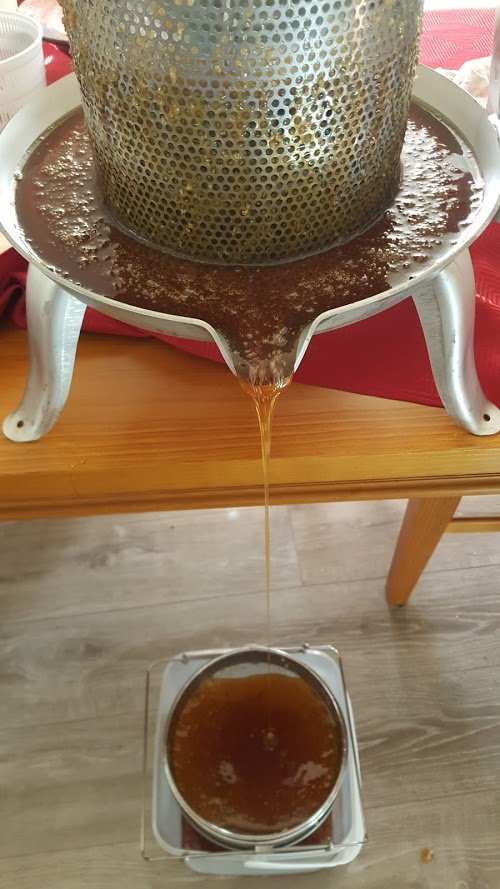
I'll be processing in the next couple of days and I'll try and post pics up.
Thank you so very much.
Please excuse the saliva all over your photo as I am just enjoying my dessert.
Many thanks again HL
Mackka
Please excuse the saliva all over your photo as I am just enjoying my dessert.
Many thanks again HL
Mackka
Similar threads
- Replies
- 28
- Views
- 2K
- Replies
- 2
- Views
- 246


